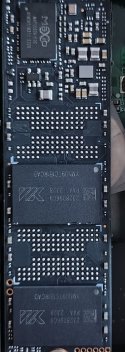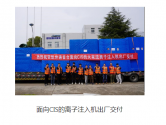yeah the paper's mechanism is pretty much what I expected based on (not mine) Au work.In the paper they say that plasma cleaning thought is good for bonding produce oxidation in the copper, citric acid helps to reduce the oxidation in the copper allowing according to the authors better bonding at ambient temperatures.
the reason I was interested was because wafer bonding is often done in vacuum.
that's to prevent contaminants from adsorbing to or reacting with the metal surface. oxidizing the metal definitely destroys the possibility of direct bonding, which is why this doesn't work for anything that rapidly forms native oxides, hence Cu, Au, etc. they're also doing this in atmospheric pressure, so surface passivation is necessary. I knew from prior work that may or may not have been mine that organic acids form semi-stable self assembled monolayers on some metal surfaces. So this was not wholly unexpected either, and they had prior work with formic acid. And then heating to moderate temperature right before bonding to drive off the acid monolayer is also known.
this is pretty good work. this didn't require too much money or time, had good basis in existing knowledge, and is useful.



